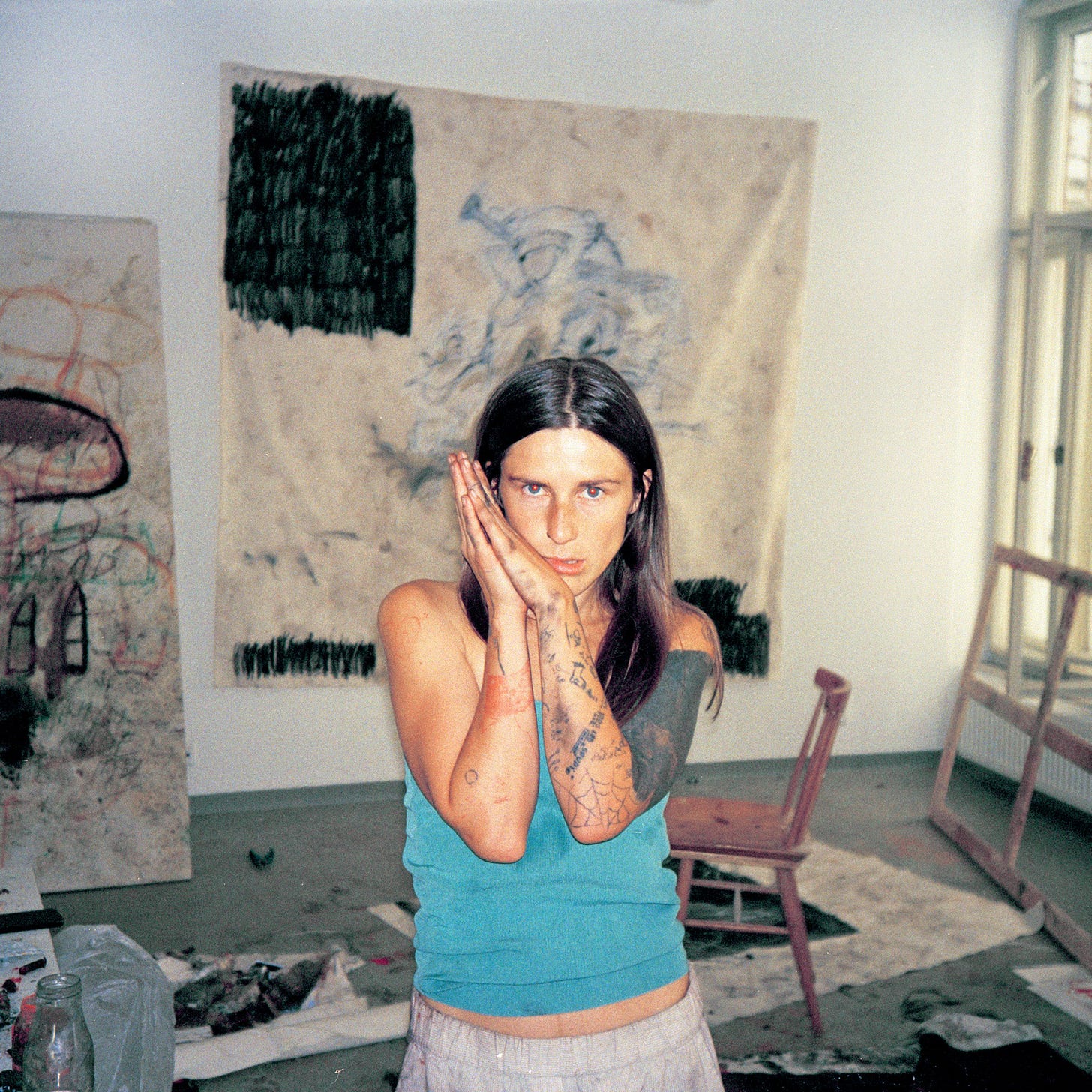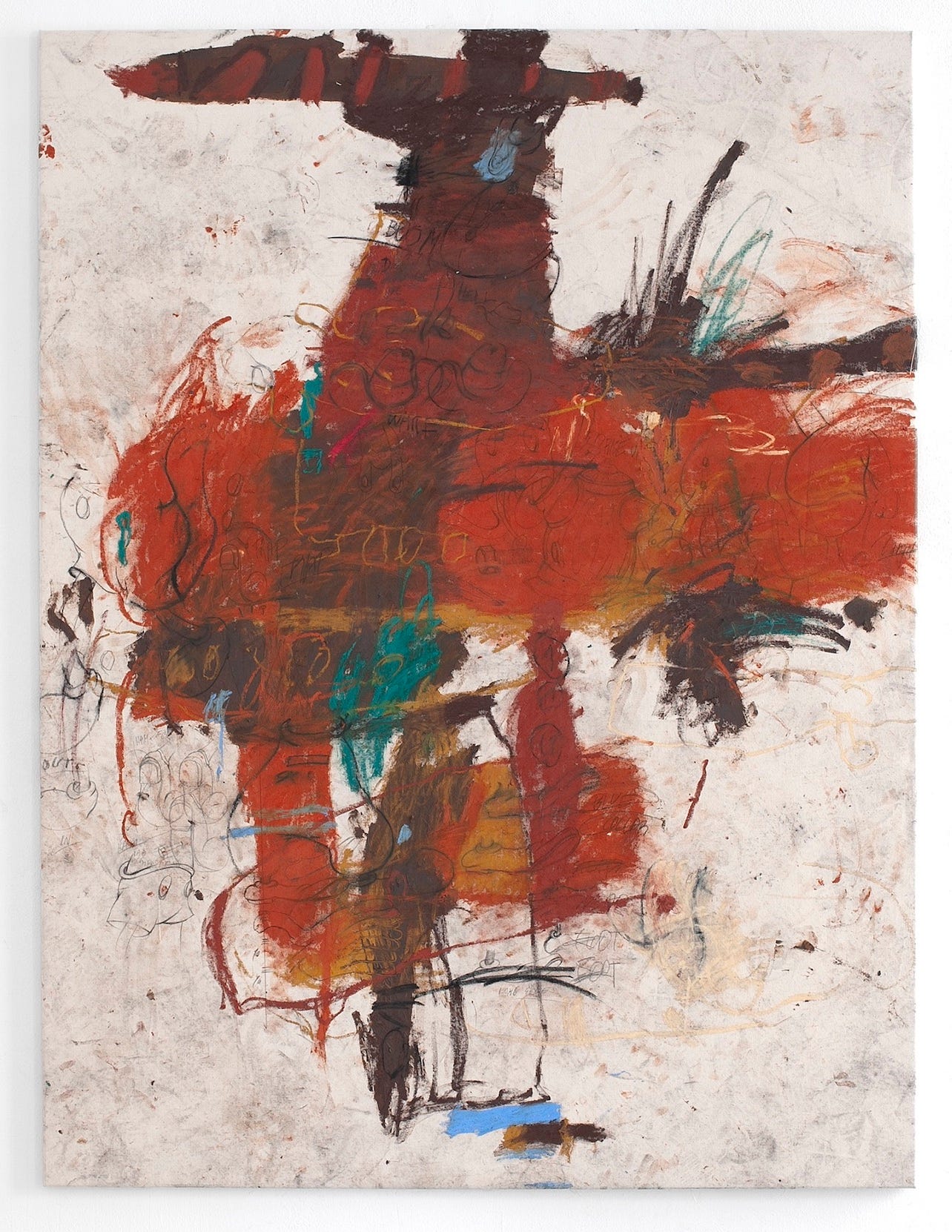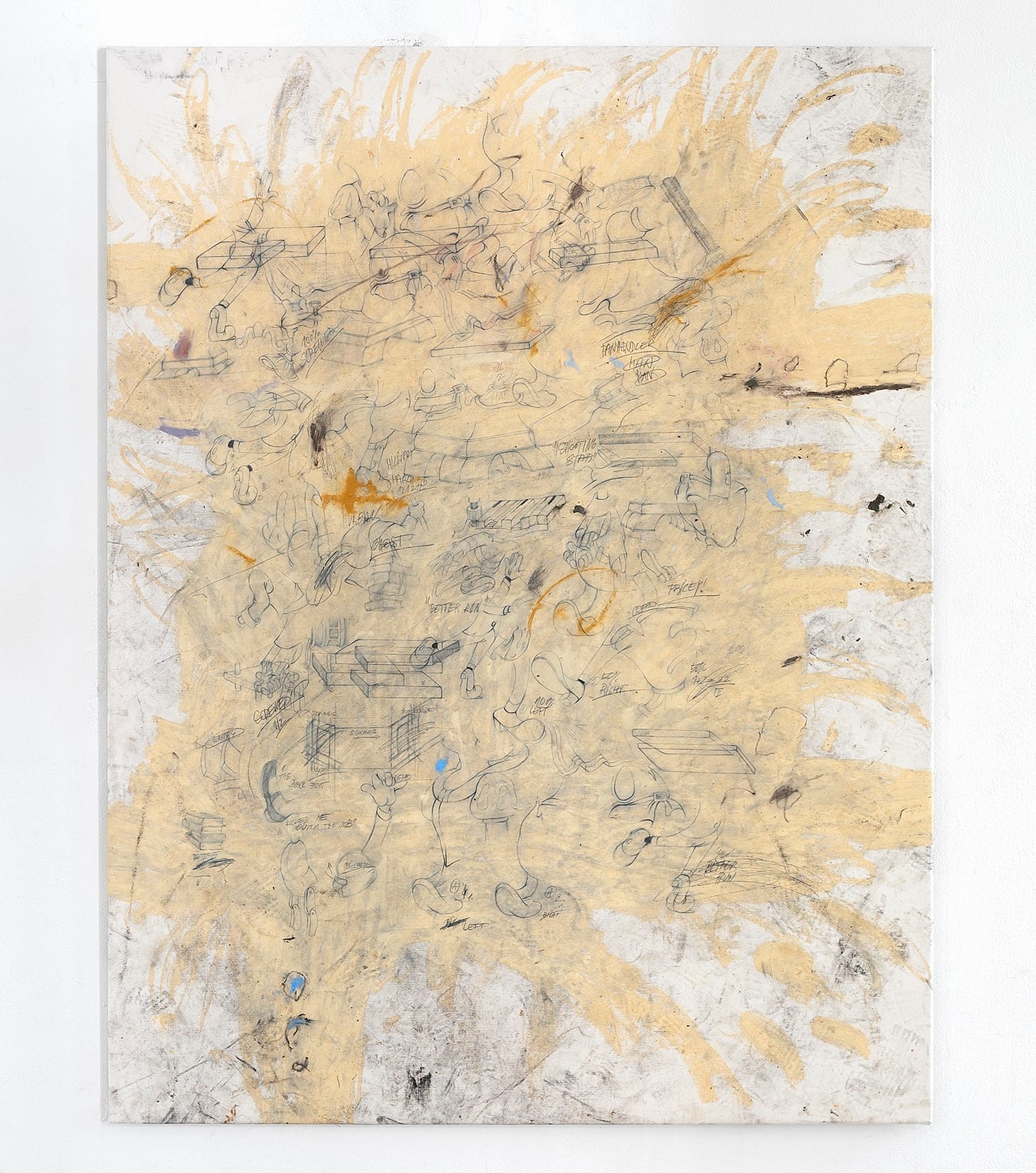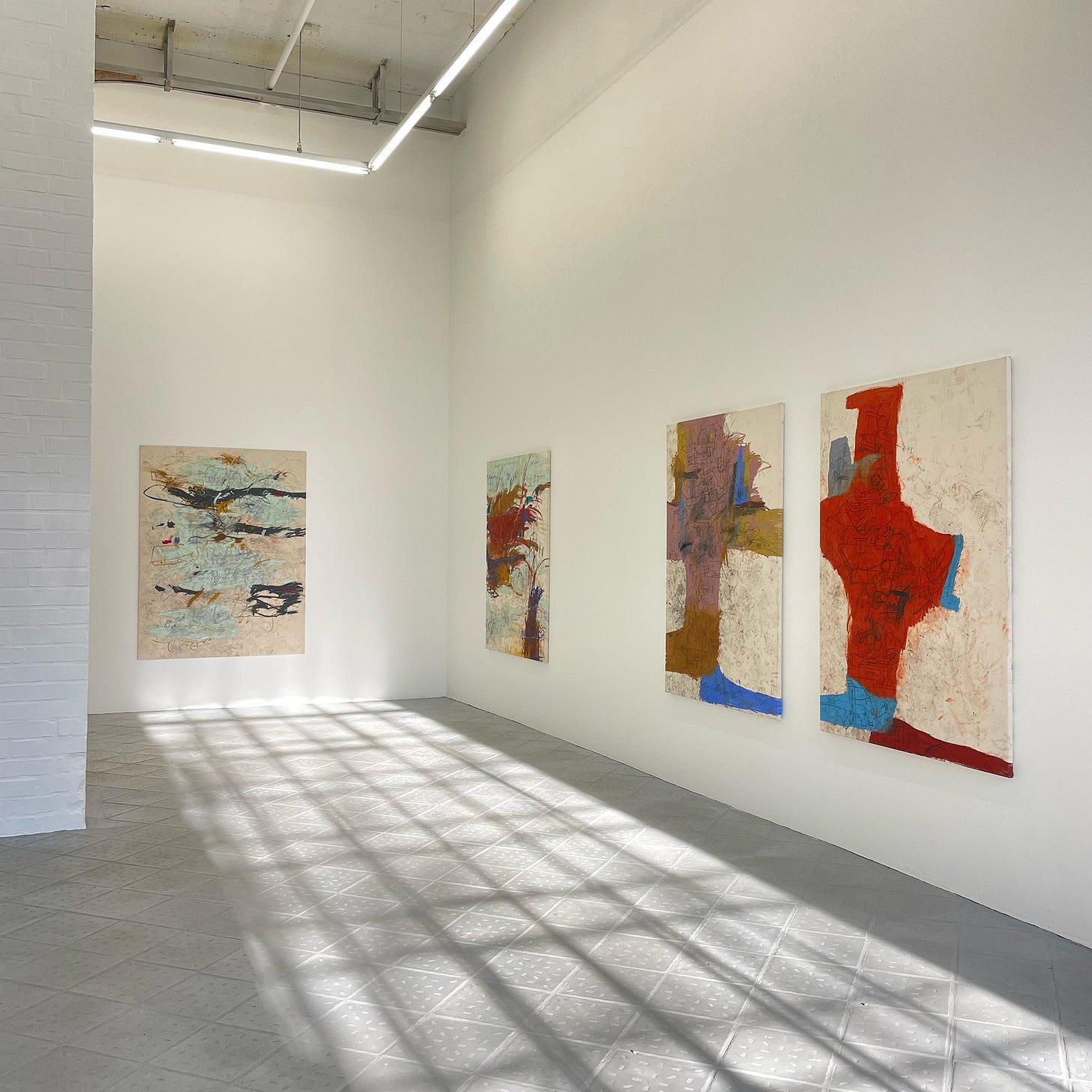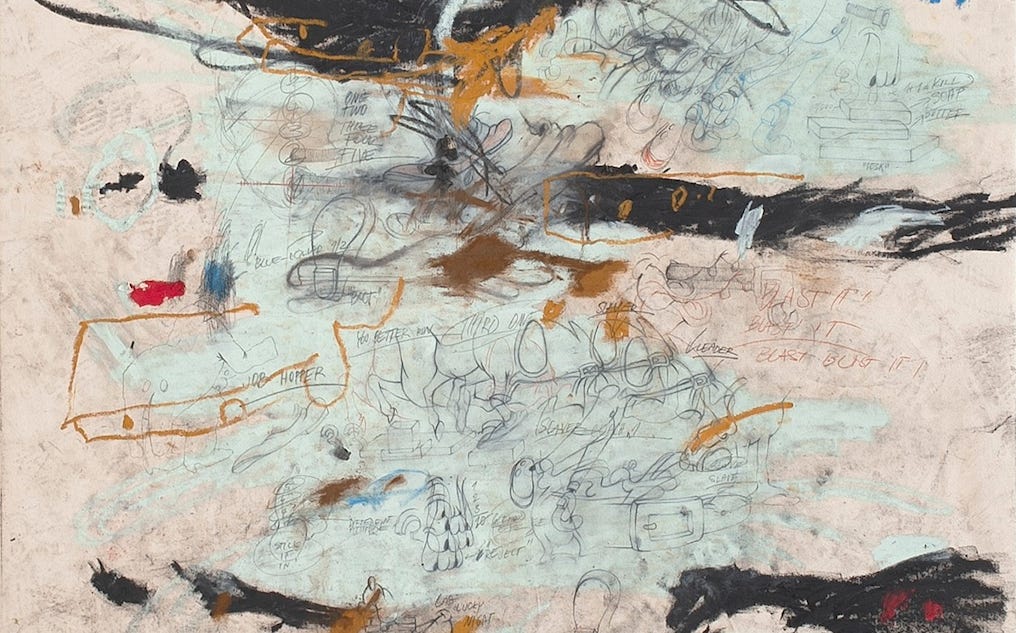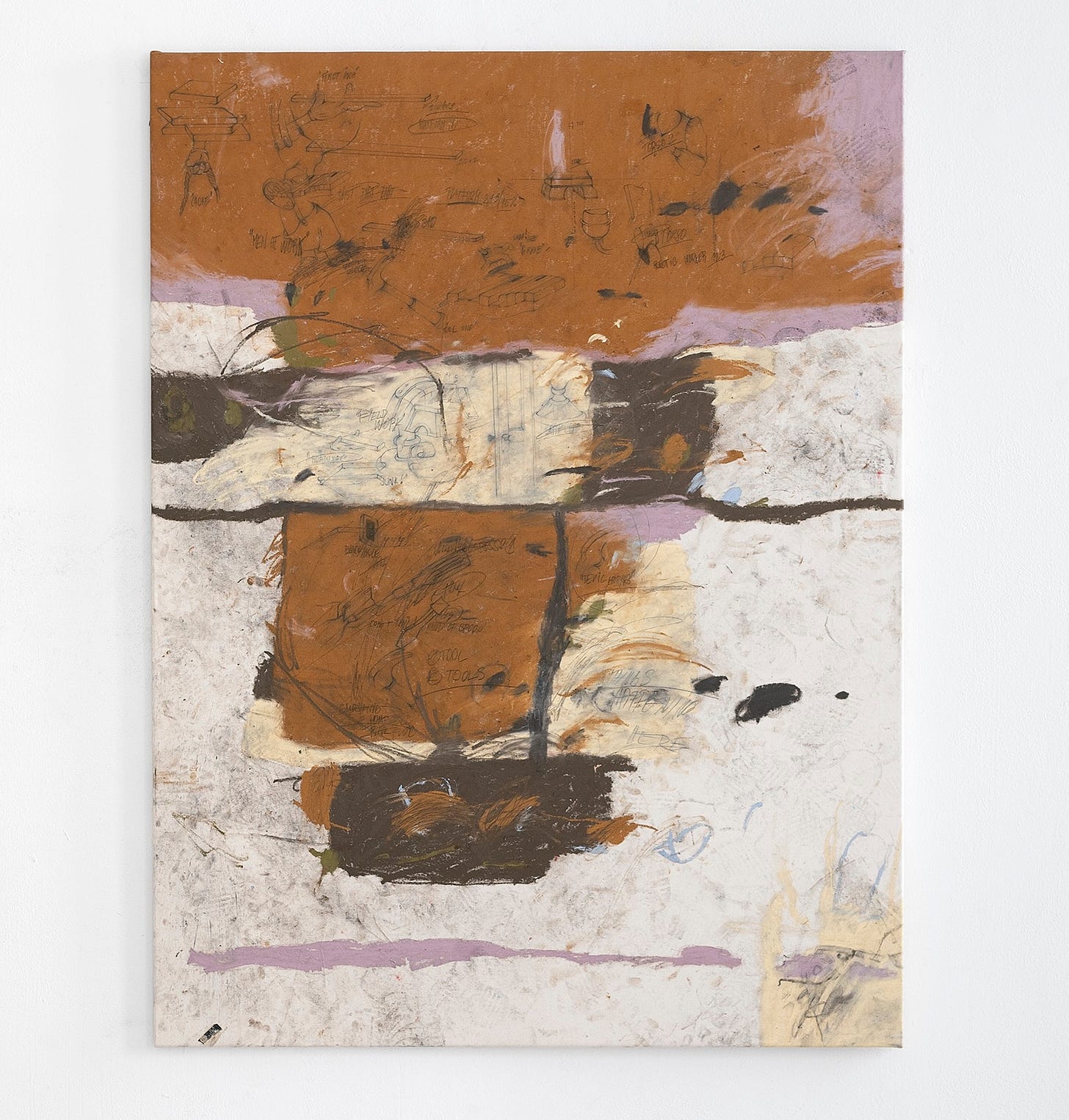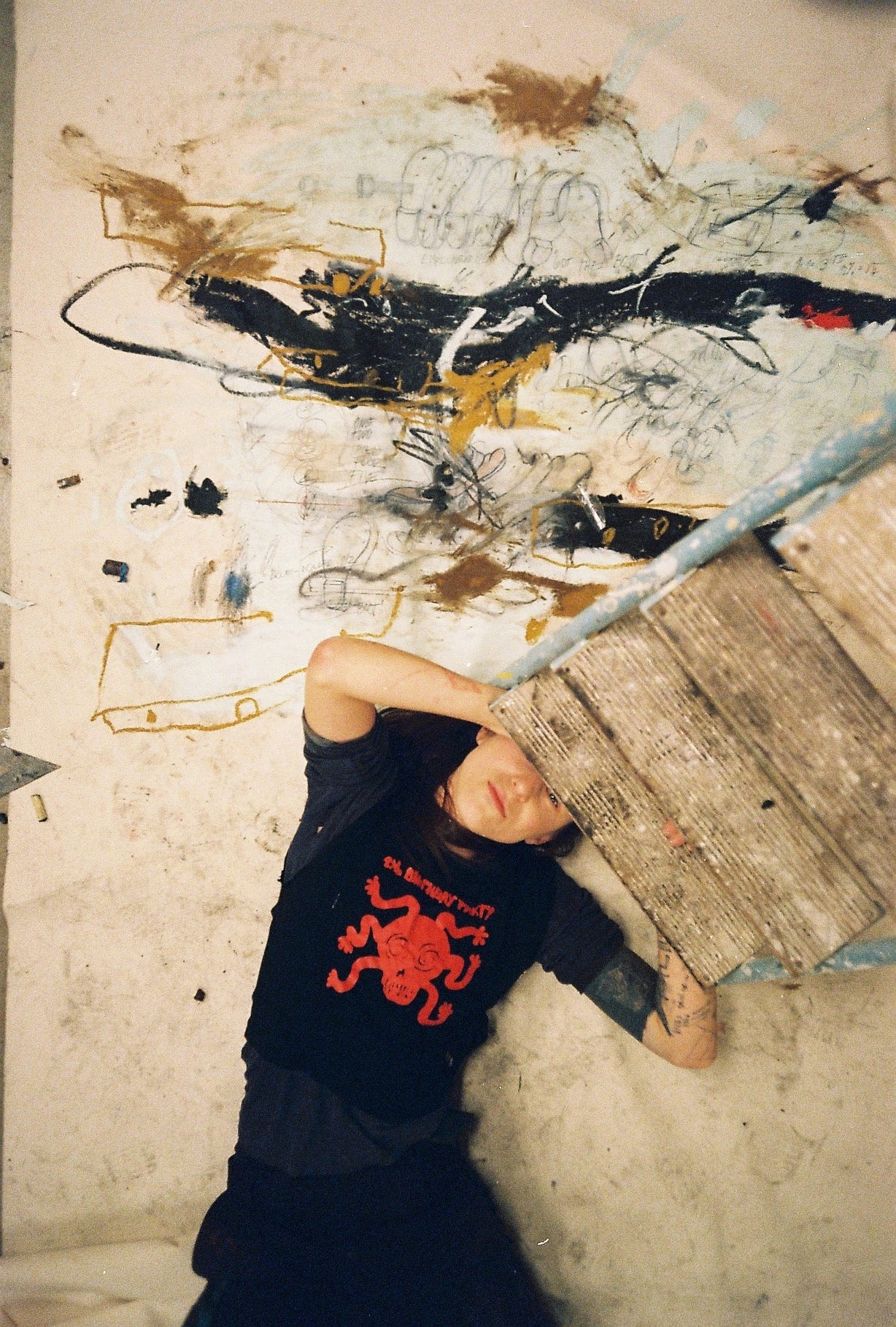There’s a sweet spot right at the intersection of painting and drawing. For me, that sweet spot is usually when I don’t quite know what I’m looking at. Is it a drawing? Is it a painting? I love it when the two bump up against each other in unexpected ways. When drawing isn’t simply a way to map out the painting, but an integral part of the mark-making.
I felt this when I discovered the work of Ester Parasková, a Czech artist who’s currently based in Prague. Her paintings fuse drawings of what looks like fragmented cartoon characters with expressive mark-making. The drawings, which are rendered almost mechanically, whip up a kind of chaos that serves as another texture within the painting. They also create a beautiful energy and sense of movement in their repetitions, like a kid’s flip book that had been cut up.
I was fascinated by Ester’s ability to balance the mechanical, factory-like drawing elements with a more human and frenzied form of expression in her painterly marks. Her canvases even invite carefree footprints and studio dirt to accumulate on her surface, creating another layer of personality. Which is exactly where I wanted to start our interview. Enjoy!
Hey Ester. I was drawn to your dirty canvas, with all sorts of marks and footprints. Can you tell me how they get dirty and is that a starting point for a painting?
The mess, the dirt, the footprints and random smudges - they’re all there because I basically just work on the floor. That’s simply how I do it. So everything that ends up on the canvas, even if it looks like a mistake or something that “shouldn’t be there,” just happens naturally while I’m working.
And you’re right. It really is the starting point of the painting. Those dirty marks become a kind of natural first layer. As I work on the ground, the dirt builds up and appears on its own during the process. It’s not something I plan or do on purpose, it just becomes part of the painting through the act of making.
What I like about it is that the painting captures a bit of the studio itself. It’s not a clean or sterile space, it’s full of tools, pigment dust, broken stuff, crushed pastels, oily stains. And I want all that chaos to be part of the work too, to show where it’s really coming from.
On closer observation, I can see a lot of drawing. It looks like fragments, or body parts of a Disney character. What material are you drawing from there?
The drawings rendered inside those colour fields come from the world of Disney. I'm not interested in Disney’s final product, but rather in the factory, or more precisely, the Walt Disney studio. I want to rework these globally iconic characters, break them down into parts, distort them, modify them, unscrew them, and turn them into anonymous fragments that I then bring together on canvas to create a completely new narrative.
Sometimes I draw from books or simply search for images online and copy them. Other times, I try to work purely from memory. In those cases, I intentionally simplify the motif, reproducing it as my memory recalls it. It might come across as a simple visual play, but underneath that accessible surface, there's a layered and powerful concept that isn’t immediately obvious.
Are there deeper interests behind the work?
I’m primarily interested in repetition in my work, which is probably obvious. I’m also drawn to a kind of mechanism, which is why I focus on copying already existing motifs. In drawing, I consciously distance myself from open creativity. It shows up more through deformation, modification, or slight deviations. But the subject itself is always something I try to reproduce in some way.
Creativity for me also appears in the use of color and in the layers of text I inscribe into the paintings, short notes, outbursts, or fragments of sentences that interrupt the mechanical repetition with something personal, human, and impulsive.
Thematically, things usually emerge from the process. I don’t set fixed boundaries beforehand. Most of the time, I’m drawn to something slightly uncomfortable or disruptive. I deform the characters, pierce them with screws, or sometimes crush them with a hammer.
How would you describe your painting process? To me it looks like you might work on the floor and let sections of paint pool here and there.
Yes, exactly. I work on the floor, and my use of colour is quite intuitive and creative. It’s a kind of gesture, a way of pushing energy and movement directly into the canvas. I sometimes call it a performative cultivation of a dirty tablecloth – or something like that.
I don’t work with paint straight from the tube. I use oil sticks, which means from the very beginning the process leans more toward drawing than painting. The color fields you see aren’t painted in the traditional sense, they’re drawn, layer by layer.
On top of these color fields, I then draw. That part of the process is much slower and more focused. I enjoy that contrast, the expressive, fast, colorful energy of the background versus the slow, almost studious pencil work on top.
How did you land on your way of working? I imagine you haven’t always painted like this.
Ever since I started working with expression in painting, I’ve always worked with the canvas on the floor. I feel like I can control it much better that way. I can move around it, across it, even on top of it, and that movement brings a natural kind of energy into the work.
When I’m standing still in front of a canvas hanging on the wall, I just can’t generate that same flow. It feels too rigid and controlled.
And then there’s the moment when the canvas gets stretched and hung up, it often feels like a surprise. That’s probably what I love most about it. I enjoy that sudden transformation.
What are you working towards now? Anything to plug, or people you want to shout-out?
Right now I’m working on a solo show called FUGAZI at Elektrohalle Rhomberg in Salzburg. Beautiful space, super kind people, I’m really looking forward to it. The opening’s on October 10th. There are also a few art fairs coming up, a group show in Lisbon, then a quick stop back in Czechia for another solo exhibition, and after that I’m heading to Slovakia for another solo. It’s been pretty nonstop lately.
A huge shout-out to my family for getting through all of this with me. I just hope my daughter won’t completely hate me one day and tell me to fu*k off when she’s a teenager. I’m really doing my best to balance studio time and family life... but yeah, it’s not always easy.
Follow Ester on Instagram: @paraskovaester
Things on Our Radar This Week
A fun read about annoying jargon-laden exhibition texts, in Plaster
Sean Scully shared some secrets in a recent Talk Art pod
The Best Painting Shows in London This Month
Joe Bradley at David Zwirner (ends 1 August)
Francesca Mollett at Modern Art EC1 (ends 19 July)
Megan Rooney at Thaddaeus Ropac (ends 2 August)
Rudolf Stingel at Gagosian Grosvenor Hill (ends 20 September)
Thanks for reading, see you next time!
Oliver & Kezia xx
Palette Talk is free and we hope to grow with your support. If you’ve enjoyed reading, drop us a donation via PayPal…




